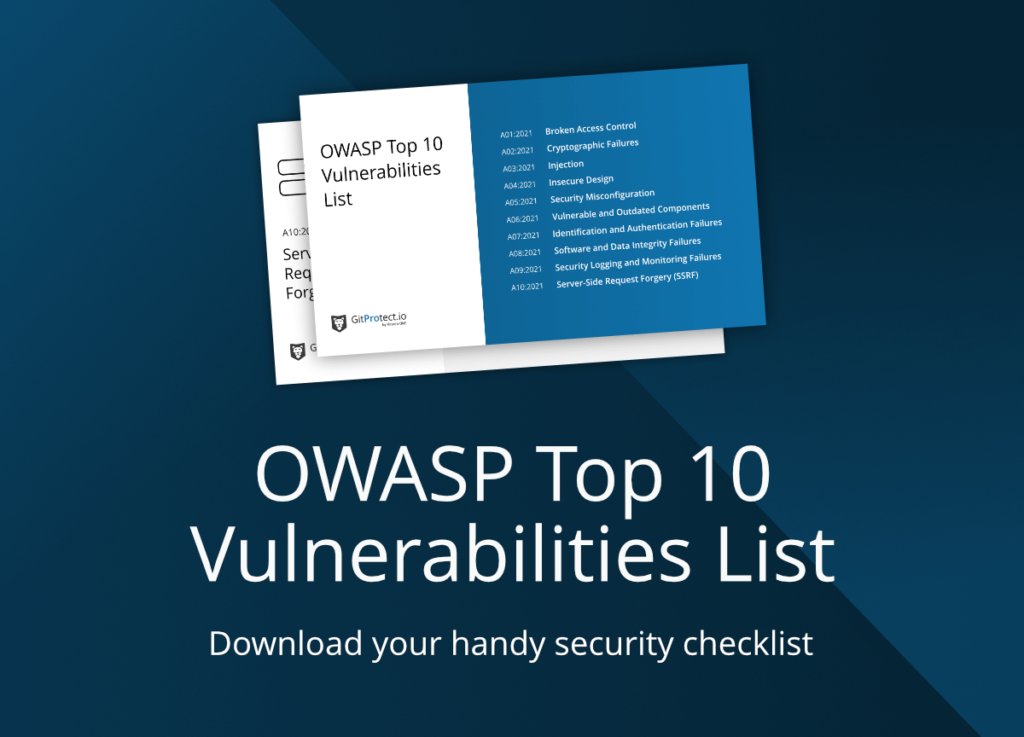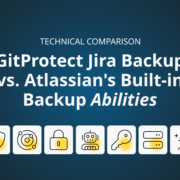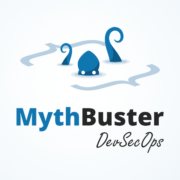
Overview: What is the OWASP Top 10?
In today’s digital landscape, securing web applications against cyber threats is paramount. OWASP (Open Web Application Security Project) offers a powerful solution in the form of its Top 10 vulnerabilities list. This invaluable resource provides developers, security professionals, and organizations with a concise guide to fortifying their defenses. So, let’s dive deep into what OWASP is and those top ten security vulnerabilities are.
OWASP… Let’s break down what it stands for
OWASP, or how it’s officially called Open Worldwide Application Security Project, is a non-profit organization that operates in the form of an open, online community, where its members ( it counts of tens of thousands developers!) can contribute to the research and the initiatives helping to create free and open-source materials, such as articles or videos, as well as hosting local and global conferences.
Its main goal is to raise awareness about the arising cyber-security threats and improve software security. The OWASP resources serve assecurity tools to help prevent and/or deal with possible web application security risks for developers and organizations.
The OWASP Top 10 – the basics
Since 2003, the web application security project, OWASP, has been releasing and updating itsrisk-related top 10 list of critical cyber-security dangers every 2-4 years, and the most recent one is the 2021 version.
The process isn’t so simple… Researchers spend a lot of time searching for new weaknesses and finding new methods to examine them. They measure threats within a few criteria:
- Prevalence: how the security problem was detected,
- Severity: how severe the detected vulnerability is,
- Magnitude: how damaging the vulnerability is.
So, it can take years before weakness is effectively tested on a large scale.
The OWASP Top 10 vulnerabilities – what threats are awaiting you?
So, now we will delve into the OWASP Top 10 vulnerabilities, shedding light on the potential threats they pose to web application security. Furthermore, we will explore effective prevention methods and solutions to mitigate these risks.
Eliminate data loss risk and ensure business continuity with the first TRUE Disaster Recovery software for DevOps platforms.
Vulnerability # 1: Broken Access Control
Broken Access Control refers to the failure of an application to properly verify and enforce access controls, allowing unauthorized users to access restricted functionality or data. In simpler terms, it means that an application doesn’t check if someone has permission to use certain features or see certain information, so those who aren’t granted access can view your sensitive data and possibly damage it.
Are there any preventive measures?
It’s worth remembering that unless something is a public resource, access should be denied by default. Moreover, implement proper access controls throughout the application and restrict access to APIs and controllers to reduce the harm caused by automated attack tools.
Vulnerability #2: Cryptographic Failures
Previously known as “A3:2017-Sensitive Data Exposure”, this fulnerability is caused by errors in the cryptographic mechanisms, which protect sensitive information (such as passwords, credit card details or other sensitive data); this includes poorly implemented encryption or lack of it.
Possible ways to prevent exposure
- Categorize information that an application processes, stores, or transmits. Determine which information is considered private according to privacy laws, regulatory requirements, or business necessities.
- Follow the necessary security measures based on the classification of the data.
- Encrypt all sensitive data that is saved, or discard it if that data is being stored unnecessarily unless PCI DSS-compliant tokenization or truncation is in use.
Vulnerability # 3: Injection
Injection vulnerabilities pose a significant risk to web application security, allowing attackers to execute unintended commands and compromise data integrity. This category includes various types of injections such as SQL injection, cross-site scripting (XSS), and XML injection. Attackers exploit these vulnerabilities by sending malicious or invalid data to the application, tricking it into unintended actions.
What to keep in mind to prevent the damage
You can mitigate the risks of injection attacks by leveraging secure APIs. These robust interfaces enable the use of parameterized queries or prepared statements, treating user input as data rather than executable code. This approach effectively neutralizes the threat of injection attacks by ensuring the separation of code and data.
Also, you can strengthen your defenses by implementing server-side input validation based on a whitelist approach, allowing only predetermined, trusted input and rejecting any unexpected or malicious data, effectively thwarting injection attempts and maintaining the reliability of your application.
What’s more, you can use LIMIT and other SQL controls, which act as powerful guardians against injection attacks. By setting limits on record retrieval and implementing secure query mechanisms, they shield your data from unauthorized access, ensuring that your system remains impervious to malicious infiltration.
Vulnerability #4: Insecure Design
Insecure Design is the weaknesses stemming from missing or ineffective security controls within software applications. It encompasses both applications built without security in mind and those with flawed implementations, leading to exploitable vulnerabilities.
Is there a way to resist it?
First, adopt a secure software development lifecycle (SSDLC) that integrates security practices from the start, ensuring design flaws are identified and addressed early in the development process.
Then, you can use threat modeling and establish a library of secure design patterns to guide developers in building applications with robust security measures that will prevent design vulnerabilities.
Also, you can incorporate security terminology, concerns, and controls into user stories to prioritize security throughout the development cycle, while implementing tenant segregation across tiers for enhanced security.
Vulnerability #5: Security Misconfiguration
Security misconfigurations occur due to design or configuration weaknesses resulting from errors or shortcomings in the configuration process.
Common security misconfigurations include misconfigured permissions for cloud services, enabling unnecessary features that lead to open ports or incorrectly elevated privileges, and leaving default account login credentials unchanged.
Is there a solution to security misconfiguration vulnerability?
You can establish a repeatable security hardening process, preferably automated, to ensure new environments are properly secured during the deployment process.
Then you can remove unused or unnecessary features, components, and files to minimize the attack surface.
Finally, you can implement an automated process to review and maintain software security settings across environments.
Vulnerability #6: Vulnerable and Outdated Components
This category focuses on the risks posed by vulnerable and outdated components within software applications that continue to use unpatched or legacy components. Thus, failure to identify and address these components can leave the application vulnerable to attacks.
Prevention measures:
- Remove unused or unnecessary libraries, components, frameworks, documentation, and files from the application.
- Maintain an inventory of both server-side and client-side components and regularly monitor for updates and vulnerabilities.
- Use official libraries and sources through secure links to ensure the integrity and security of the components (never rely on untrusted data!).
- Monitor for unsupported libraries and components that are no longer maintained or have reached end of life.
Vulnerability #7: Identification and Authentication Failures
Identification and authentication failures occur when user identity, authentication, and session information are not properly confirmed before granting access to systems and data. Weak passwords, weakly hashed or plain-text password storage, and inadequate protection against automated attacks like brute force and credential stuffing contribute to these failures. This category was previously known as broken authentication and in the OWASP analysis of 2017 was ranked in the 2nd position.
Possible solution measures:
- Implement multi-factor authentication to add an extra layer of security for your sensitive data.
- Avoid using default credentials, especially for administrative accounts.
- Take steps to limit account enumeration, making it difficult for attackers to determine valid usernames.
Vulnerability #8: Software and Data Integrity Failures
Software and data integrity failures are a new category added to the OWASP list. These failures involve trusting data and software updates without verifying their integrity. Attackers can exploit this by introducing malware through seemingly legitimate software updates. Automated software update features that do not verify the integrity of updates are particularly vulnerable. Insecure deserialization, a flaw that allows remote code execution, is also included in this category.
The way to protect yourself against these failures
To eliminate the risks you can use digital signatures or other verification methods. It will ensure that your software updates originate from trusted sources and arrive intact.
Another measure that’s worth considering is the verification of the third-party libraries and dependencies that you use. They should come from legitimate sources – that’s the rule!
Moreover, you can use automated security tools designed for the software supply chain to scan for vulnerabilities in third-party resources.
And finally, you can also implement secure deserialization practices to prevent code execution vulnerabilities.
Vulnerability #9: Security Logging and Monitoring Failures
Security logging and monitoring failures, also known as insufficient logging and monitoring, focus on issues related to audit logs and monitoring during a security breach. Failure to properly log and monitor events can make it difficult to detect and mitigate an ongoing attack.
Among common failures, we can mention inadequate logging, lack of monitoring for suspicious activities, and limited availability of security logs.
What to do to stay afloat?
- Implement comprehensive security logging and monitoring across applications.
- Log important events with user context to preserve evidence of malicious or suspicious activity.
- Generate logs in a format compatible with log management tools.
- Enable monitoring and alerting for suspicious activities.
- Develop an incident response and mitigation plan to respond effectively to security breaches.
Vulnerability #10: Server-Side Request Forgery (SSRF)
Server-Side Request Forgery (SSRF) is a category added to the OWASP Top 10 list based on the feedback from the Top 10 community survey. By the way, the community ranked it as their top concern. However, the data shows a relatively low incidence rate. It’s considered important due to above-average ratings for exploit and impact potential. This category represents a scenario where the security community members emphasize its significance, even if the data does not fully illustrate its prevalence at the moment.
SSRF occurs when a web application fetches a remote resource without validating the user-supplied URL, allowing attackers to manipulate the application into sending crafted requests to unintended destinations. Even systems protected by firewalls, VPNs, or additional network access controls can be vulnerable to SSRF attacks. The increasing complexity of architectures and the adoption of cloud services contribute to the rising severity and incidence of SSRF attacks.
What measures to take as prevention ones?
Preventing SSRF requires implementing protection measures at both the network and application levels. When it comes to network-level prevention, you should utilize network segmentation. It will help to separate remote resources from sensitive internal systems. Moreover, you can adopt “deny-by-default” policies to block nonessential traffic and restrict access to trusted sources.
If we consider application-level prevention measures, here you should:
- implement thorough data input sanitization, validation, and filtering to ensure the legitimacy of user-supplied URLs,
- disable HTTP redirection at the server level to prevent attackers from manipulating the destination of requests.
- ensure server responses conform to expected results and avoid exposing sensitive information. Raw server responses should never be directly sent to the client.

Why consider OWASP Top 10?
The OWASP Top 10 multiplies the impact of security efforts by focusing on the most prevalent vulnerabilities. It distills collective wisdom, empowering users to prioritize resources effectively and navigate potential pitfalls. Among the main benefits it brings, we can distinguish:
Meeting industry standard
The list of OWASP’s top ten security vulnerabilities is widely recognized as an industry-standard reference for web app security. It provides a comprehensive list of the most critical security risks faced by applications, allowing organizations to focus their efforts on addressing these key areas… And it’s much easier to build your security when you know what you may face.
Risk prioritization brings effectiveness
With the OWASP Top 10, organizations can prioritize their security efforts and highlight the most prevalent and impactful vulnerabilities. By focusing on these top risks, organizations can allocate their resources more effectively and efficiently.
Awareness and Education:
The OWASP Top 10 increases awareness about common security vulnerabilities among developers, security professionals, and stakeholders. It serves as an educational resource, promoting best practices and helping individuals understand the potential risks associated with their applications.
Are there any downsides?
As with any other guidance, the OWASP Top 10 has some limitations and disadvantages. Let’s look at them in more detail:
Limited scope
The OWASP Top 10 focuses on the most common web app vulnerabilities but may not cover all possible risks. Organizations need to consider additional vulnerabilities and threats specific to their applications, industries, or unique use cases. That is why, they need to consider using continuous monitoring and DevSecOps tools. Moreover, to be sure that all the data is accessible and recoverable, it’s worth having a DevOps backup in place. Here you can read why backing up DevOps tools really matters.
Rapidly evolving threat landscape
The list of vulnerabilities is updated periodically, but the threat landscape evolves rapidly. New vulnerabilities may emerge that are not yet included in the list, requiring organizations to stay updated with the latest security trends and research beyond the given OWASP Top 10 list.
Risk Perception
Organizations or individuals solely relying on the OWASP Top 10 may develop a tunnel vision, assuming that addressing these ten vulnerabilities is sufficient to ensure application security. This can lead to overlooking other critical risks that are not explicitly covered in the Top 10.
Are you interested in this topic? Check out our other blog posts about vulnerabilities and data breaches:
Ultimate Review of the most infamous GitHub-related security incidents in 2022
2022 In A Nutshell: Atlassian Outages And Vulnerabilities
Okta suffers a hacker attack on GitHub repositories. Was it predictable?
GitHub RepoJacking: Are You Sure Your GitHub Is Safe?
Harnessing OWASP: Protecting Your Web Applications
The OWASP Top 10 multiplies the impact of security efforts by focusing on the most prevalent vulnerabilities. It distills collective wisdom, empowering users to prioritize resources effectively and navigate potential pitfalls.
OWASP fosters collaboration, bridging gaps between developers, security professionals, and the wider community. This shared knowledge shapes the Top 10, ensuring its relevance and adaptability in an ever-changing threat landscape.
However, the OWASP Top 10 has limitations. It provides a snapshot of prevalent vulnerabilities, potentially excluding emerging threats. Organizations should complement it with continuous monitoring and adaptation to evolving risks.
In conclusion, OWASP and its Top 10 project illuminate the path to web application security. By harnessing this resource, we navigate cyber threats armed with knowledge, collaboration, and an unwavering commitment to safeguarding what matters most. Together, we embark on a journey towards a safer digital future.






